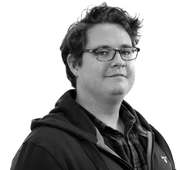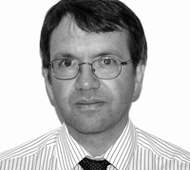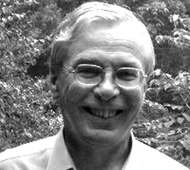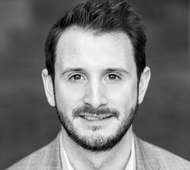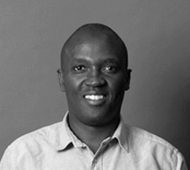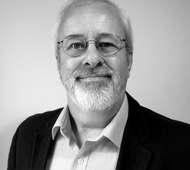12:00
Registration and networking over lunch
13:00
Introduction to Radio Technology SIG from John Haine, u-blox AG
13:10
Welcome from host, Mark Beach, Manager, CDT in Communications, University of Bristol
13:20
Welcome from John Crute, CEO, The Technology Academy on behalf of sponsor, Rohde & Schwarz
13:30
Division Free Duplex in Small Form Factors; Leo Laughlin, PhD Student, University of Bristol
Full duplex transceiver technology will only be deployed in future mobile devices if the self-interference cancellation hardware can meet the demanding low-cost and small form factor requirements of handset applications. Electrical Balance Duplexing enables simultaneous transmission and reception from a single antenna, making it an attractive choice for duplexing in mobile devices. In this talk we present our prototype full-duplex transceiver which combines Electrical Balance Isolation with active analogue cancellation to provide high transmit-to-receive isolation over wide bandwidths using low cost small form factor technologies.
13:50
Q&A
13:55
Addressing the LTE Bandwidth Challenge on Small Mobile Terminals: One World, One Radio; Samantha Caporal Del Barrio, Industrial Post-Doc, Aalborg University and WiSpry
This talk concerns frequency-reconfigurable antennas with the aim of addressing the challenge of band proliferation for small mobile terminals. This challenge arose with the worldwide standardization of Long Term Evolution (LTE). Designing a worldwide LTE phone (i.e. a world-phone) with conventional techniques reaches the limit of component integration, given the very tight platforms of typical smart-phones. A shift in architecture is required in order to cover the bandwidth needed for worldwide LTE roaming.
14:15
Q&A
14:20
MAC Protocol for In-Band Full-duplex Systems;Dr Mir Ghoraishi, Project Leader 5G Testbed and Proof-of-Concept, Institute for Communication Systems (ICS), University of Surrey
Full-duplex radio has attracted a lot of attention in recent years and with the introduction of novel selfinterference techniques it is proved that the in-band full-duplex operation is possible. Before a fundamental rethinking of the way wireless networks are designed however, the system cannot enjoy the benefits of the full-duplex operation. Specifically, an accurate model for multiple access (MAC) protocol needs to be devised to translate the physical layer full-duplex gains into the overall network improvements. The MAC protocol design for full-duplex is an open area of research which is going to be of interest to both the
industry and the academia as this technology matures in the next few years. This talk will provide an
overview of the topic including related recent works.
14:40
Q&A
14:45
Refreshments and Networking
15:15
Orbital Angular Momentum Radio: A new possibility for Full Duplex Radio?collaborative work with Alan Tennant, University of Sheffield); Ben Allen, Visiting Fellow, Department of Engineering Science, University of Oxford
Recently Orbital Angular Momentum Radio (OAM-Radio) has been shown to provide huge gains in spectral efficiency for line-of-sight radio links. This has been achieved by means of either using antenna arrays and signal coding (akin to MIMO) or circular phase plates to provide the required signal profile. It may also be possible to use this concept towards enabling full-duplex radio by using the filtering function at the OAM-radio receiver.
This talk introduces and reviews recent work on OAM-radio and then explores the possibility of applying it in the context of full-duplex radio
15:35
Q&A
15:40
Operators perspective on full-duplex; David Lister, Research Manager, Vodafone UK
This talk will be discussing the use-cases under which full-duplex can be applied and some of the challenges that will emerge when applied to a system with multiple base stations and terminals.
16:00
Q&A
16:05
Air Division Duplexing doubles Transmission Capacity for Microwave Backhaul; Geoff Carey, Director, MIMOtech
The application of full duplex radio techniques as an alternative to line of sight MIMO brings a new dimension to ultra-high capacity transmission for microwave backhaul. MIMOtech has realised a backhaul radio system using the Air Division Duplexing technique to achieve simultaneous transmission and reception on the same frequency. This talk will cover the solution and look at the advantages and challenges of the technology.
16:25
Q&A
16:30
Panel session with all speakers chaired by SIG Champion, Diego Giancola, PA Consulting Group
17:00
Event closes



